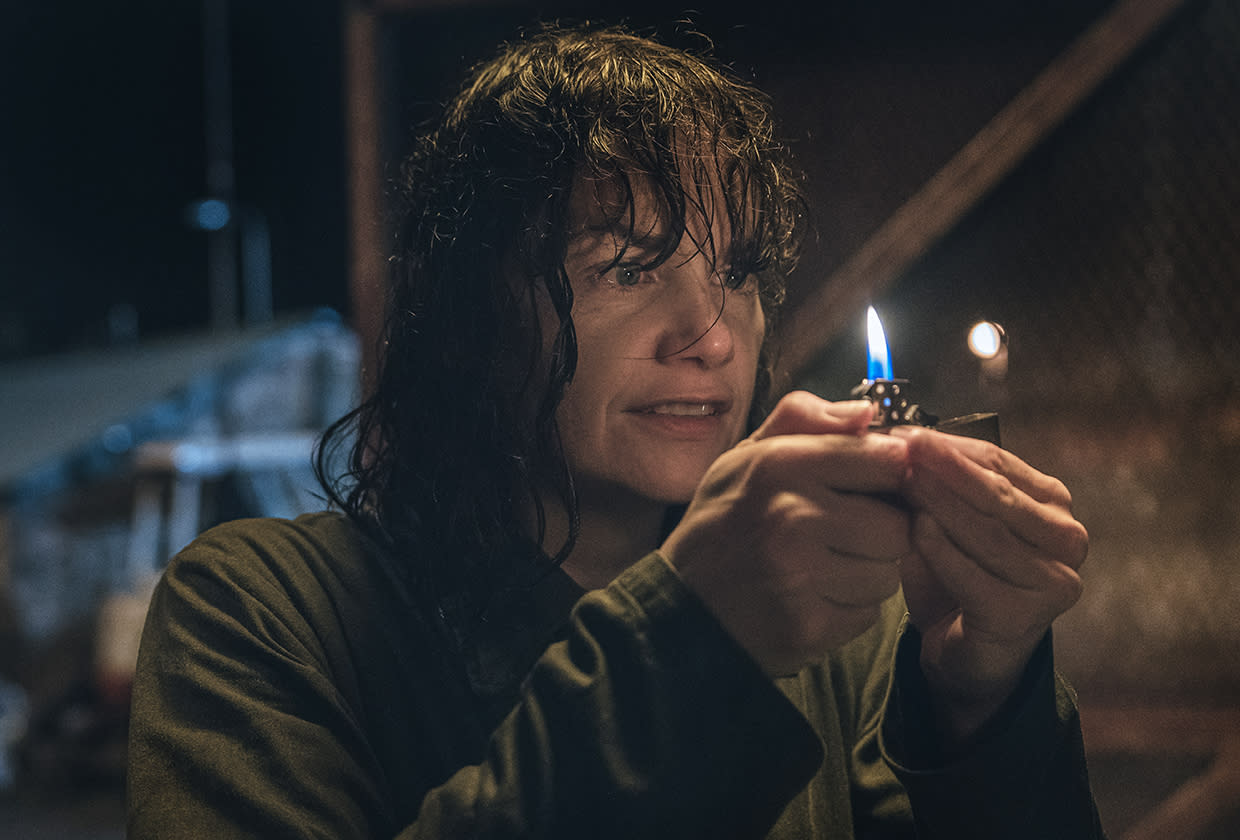The Woman in the Wall Premiere, Explained: What Were the Magdalene Laundries?

The Woman in the Wall, which dropped its first episode on Paramount+ Friday, tells the fictional story of a fictional woman played by The Affair‘s Ruth Wilson. But there’s one element of the show that’s very real, and that’s the unsavory history of Ireland’s Magdalene Laundries.
Friday’s series premiere — which will have its linear debut on Paramount+ With Showtime (formerly known as Showtime) on Sunday at 9/8c — talks obliquely about the Magdalene Laundries and the years of abuse they facilitated, but there’s no formal explanation of what they were. From the 18th to 20th centuries, these typically Catholic-run institutions housed “fallen women,” a phrase that often referenced sex workers, but could also refer to women who got pregnant out of wedlock, teenagers who had gotten pregnant, or, in some cases, women who didn’t have any sexual experience at all. (“Not all of us had babies,” one fictionalized laundry survivor says in The Woman in the Wall‘s debut. “Peggy was a great beauty. They used to say she was after the boys and the married men. She never even had a boyfriend.”)
In the ’90s, former inmates of the laundries — also called asylums — began to speak out about the treatment they experienced while confined there, including alleged physical, sexual and psychological abuse. After a nearly two-year-long investigation that found the Irish government had been significantly involved in women’s admission into the Magdalene Laundries, a formal state apology was issued in Ireland in 2013, expressing regret to the “wholly blameless” inmates who were labeled “fallen women,” and calling the Magdalene Laundries “this country’s terrible secret.” (Late singer Sinead O’Connor previously opened up about her time spent in a laundry as a young woman, calling it “a prison.”)
And though the characters in The Woman in the Wall are not explicitly based on any real people, perhaps this statement from laundry survivor Amy in the premiere sums up the asylums’ place in Irish history: “I don’t want compensation. I want blood. I want the Pope in Rome to drive all the way to Kilkinure in his stupid f—kin’ Pope-mobile and apologize unreservedly to each and every one of us. And short of that, what’s the point?”
Wilson’s character, Lorna Brady, is also a survivor of these institutions, having been unwillingly sent as a teenager to a convent, where the baby she later delivered there was taken by a nun and never returned to her. In the present day, Lorna now works at a tailor shop and doesn’t seem to want to investigate what happened to her baby. But Lorna also struggles with sleepwalking spells during which she exhibits increasingly dangerous behavior… like, perhaps, killing somebody?
Lorna wakes up one morning to find a woman dead in her closet, with no memory of how that woman got there or what happened the previous night. While she’s trying to solve that mystery and track down the author of an anonymous note she recently received — “I know what happened to your child,” it read — Lorna also gets caught up in the murder investigation for Father Percy Sheehan, the very man who dragged Lorna to the convent as a teenager and has just been killed at his home in Dublin. Yeah, it’s a rough start for Lorna. (Jury’s still out on whether she had anything to do with Father Percy’s death, though.)
Lorna becomes steadily more horrified at her own sleepwalking behavior during the premiere, particularly after she realizes she set Father Percy’s car on fire after the police towed it away as evidence following his murder. But at the end of the hour, having been exposed to more and more discussion of the Magdalene Laundries throughout the premiere, Lorna returns to her house and examines the corpse in her closet once again. She realizes that this isn’t just any woman: This is, in fact, the very nun who took Lorna’s baby away from her at the convent many years ago — and if Lorna did kill this woman, she doesn’t seem too remorseful about that now, having remembered her history with the woman. Instead, Lorna drags the woman out into her living room, knocks out a good chunk of the room’s wall with an ax, props the woman up inside the wall, then looks delighted as she patches up the hole with the woman trapped inside.
OK, your turn. What did you think of The Woman in the Wall‘s premiere? Grade it in our poll below, then hit the comments with your full reviews!
